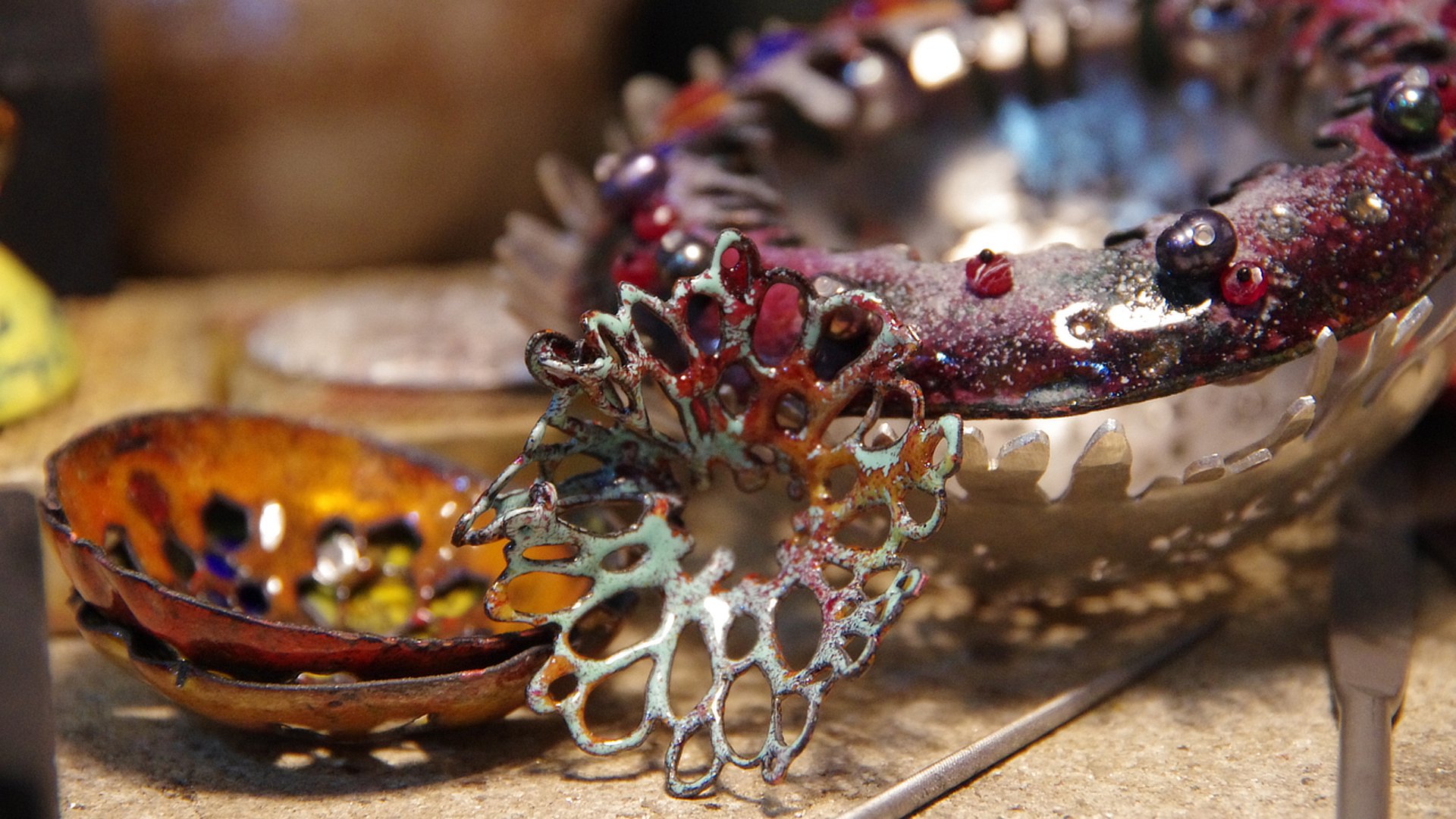
blog
Welcome to my blog. This is a place where I think out loud, show you what I’m up to in the studio, share impressions of inspiring events or everyday moments that moved me. Some entries are carefully curated essays, others are just a few thoughts, sometimes written in English and sometimes in German.
Featured posts

newest blog entries:
Schmucksymposium: A jewellery gathering
After two years of social starvation, induced by the pandemic, we finally met again. We - that’s my tribe: a global community of jewellery makers, craftspeople, writers, curators, thinkers and art enthusiasts. At Haxthäuserhof Jewellery Symposium (formerly known as Zimmerhof), hidden away in the German countryside between apple orchards near Mainz, about one hundred creative souls gather each year to spend Ascenscion weekend together.
Schmucksymposium:
A jewellery gathering
Meeting at an annual jewellery symposium.
Written in English.
After two years of social starvation, induced by the pandemic, we finally met again. We - that’s my tribe: a global community of jewellery makers, craftspeople, writers, curators, thinkers and art enthusiasts. At Haxthäuserhof Jewellery Symposium (formerly known as Zimmerhof), hidden away in the German countryside between apple orchards near Mainz, about one hundred creative souls gather each year to spend Ascenscion weekend together.
While the logistical organizing team is more or less fixed, the symposium’s theme and content is usually chosen by different team of established artists/practitioners in the field of (contemporary) jewellery each year. This year‘s Haxthäuserhof Schmucksymposium was centered around the theme BLISS - personal bliss, how creative practice can be bliss, what following one’s bliss can mean in different contexts, how to stay on the path searching for one’s bliss - despite all the distraction and horror crowding in from the outside world. Our team for this year - Claudia Hoppe and David Huycke - gathered together a group of remarkable speakers to feed our minds and souls in twelve lectures.
These lectures were interspersed with coffee-breaks and meals prepared by talented Berlin-based chef Christoph Esser (how he manages to create so much flavour in a simple lentil dish remains a mystery to me!), followed by a couple of drinks from the bar, great camp-fire conversation and dancing as the night progresses. Nights were short. Days were overflowing with stimulating creative input.
A sincerely moving lecture by jewellery artist Mirjam Hiller, describing her creative process of coaxing a 3D-object from a flat sheet of metal.
This year’s speakers highlighted the many different paths towards bliss. The gathering included perspectives on creative practices by
renowned Dutch designer Aldo Bakker,
artistic jewellery maker and researcher Lore Langendries, based in Hasselt, Belgium
German art and contemporary jewellery journalist Christel Trimborn
German jewellery maker Nicole Walger
Danish goldsmith and jewellery trailblazer Kim Buck
post-doctoral AI-researcher Anneleen Swillen, based based in Hasselt, Belgium
Eva Monnikhof, director of DIVA, diamond museum in Antwerp
German philosopher-poet and jewellery maker Mirjam Hiller
silversmith and course leader of PXL-MAD School of Arts in Hasselt, Berlgium, Nedda El-Asmar
iconic Australian jewellery maker(-poet) Robert Baines
German art historian and maker Julia Wild, also teacher at Hochschule Trier
well-known Spanish jewellery designer Marc Monzo
Our chef de cuisine, Christoph, who kept everyone well-fed and happy with delicious, wholesome meals for the entire weekend.
Cooking for a hundred people is no easy task.
Schmucktisch.
Ready for the guests. Haxthäuserhof is a beautiful and remote location with the added benefit of having no WIFI and atrocious cell signal.
Schmucktisch.
Together, these lectures wove themselves into a bright and richly textured tapestry, a braid of diverse stories and experiences. The colourful narrative threads had a deeply personal tone in common. These glimpses into the intimacy of someone’s creative practice truly moved me, and left me with an almost-tangible kernel of something golden and solid and precious clutched in my fist, more valuable than money or status or power, a little piece of bliss to hunt for, or at least the certain knowledge that it exists somewhere on this meandering creative path. Not everywhere, not always, but definitely sometimes.
Escaping for a walk in nature between lectures to clear the mind.
Lecture by Danish goldsmith Kim Buck, featuring his well-known Daisy Series referring to the Danish Daisy brooch made in 1940 to commemorate the birth of queen Margarethe.
Many speakers brought examples of their work, allowing participants to have a close-up look, feel the textures, and ask questions about their pieces. Here are animal hide brooches and neckpieces by Lore Langendries.
Kim Buck, one of this year’s speakers, has kindly agreed to organize next year’s symposium together with a jewellery colleague Karin Johansson, based in Gothenburg, Sweden. We are looking forward to their choice of themes and speakers!
A glimpse of the barn where all lectures took place, semi-obscured by a fragrant kitchen garden.
Schmucktisch.
SÜDAFRIKA: VON FELSEN, (WARTE)SCHLANGEN UND VERBORGENEN WELTEN
Eindrücke unserer Reise in mein Heimatland Südafrika.
SÜDAFRIKAREISE
VON FELSEN, (WARTE)SCHLANGEN UND VERBORGENEN WELTEN.
Auf Deutsch.
Wieder in Bamberg ist der Himmel weißgrau und wetterlos – kein Regen, keine Sonne, kein Schnee, keine Bamberger Schäfchenwolken. Nur ein weißes, stilles Nichts, eigentlich perfekt zum Ankommen und Verarbeiten der Reiseeindrücke.
Zum ersten Mal waren Alvaro und ich also gemeinsam in meinem Heimatland Südafrika, und so sehe ich viele Eindrücke wie mit einer Doppelbrille gleichzeitig ganz neu zum ersten Mal, aber auch als Normalität, als eine Erinnerung an mein früheres Leben dort. Südafrika ist ein Land von beeindruckenden Kontrasten, ein Land der unterschiedlichsten Wirklichkeiten. Unzählige gelebte Schicksale verweben sich zu einem dicken Zopf aus Weltgeschehen, dessen unterschiedliche Stränge doch eigenen Gesetzen und widersprüchlichen Logiken folgen, und dazu so unterschiedliche Selbstverständnisse in sich tragen.
Ein Teil meiner Familiengeschichte flicht sich hier im 19. Jahrhundert ins Geschehen, als ein Schwede nach Südafrika auswandert und dort eine Familie gründet. Wir besuchen meine Großeltern auf ihrem kleinen Weingut, das in den Hügeln um Stellenbosch liegt, zwischen der letzten Düne des Meeres und den ersten Granitbrocken der nahen Berge. Wir besuchen meine Mutter, die Haus und Garten in ein schattiges Refugium verwandelt hat. Wir besteigen den Tafelberg, wandern, fahren ans Meer, besuchen Freunde, streifen durch die Landschaft, sammeln bruchstückhafte Eindrücke. Davon teile ich einige Fragmente.
Der Cabernet Sauvignon meiner Großeltern; die Reben sind so alt wie ich.
Das alte Farm-Wohnhaus im kap-holländischen Stil, fast versteckt im dicht gewachsenen Garten mit Feigen, Palmen, Hibiskus.
Mandelernte. Das kapländische Klima eignet sich bestens für Mandeln, die im Januar aus der grünen Außenschale platzen und dann geerntet werden können. Im großzügig angelegte Obstgarten meiner Großeltern gibt es fast in jeder Jahreszeit Arbeit.
Die steile, von Felsbrocken übersähte Skeleton Gorge ist eigentlich ein Flussbett, in dem einer der vielen Wege nach oben führt.
Auf dem Tafelberg sind ganze Welten in Felsschluchten und Hochplateaus verborgen. An einem sonnigen aber zum Glück etwas windigen Tag führt mein Bruder uns einen Lieblingsweg hinauf. Wir klettern durch die felsige und dicht bewaldete Skeleton Gorge immer höher, und unter uns breitet sich die Millionenstadt endlos und glitzernd aus. Noch höher, und wir sehen das Meer, den großen Bogen der False Bay und die violetten Bergketten dahinter, die das Kap vom Landesinneren trennen. Oben auf der zerklüfteten Ebene des Tafelbergs gibt es zahlreiche Wege, die sich durch die atemberaubende Fynbos-Welt schlängeln. Fynbos gibt es nur hier im Westkap: eine heimische Mischung aus Proteengewächsen, Gräsern, zarten Kräutern und Blumengewächsen, die teilweise so speziell an ihren Lebensraum angepasst sind, dass sie nur in einem winzigen Gebiet überhaupt vorkommen. Wie etwa der Silberbaum Leucadendron argenteum, ein Proteengewächs mit mysteriös schimmernden Samtblättern, das allein an den schattigen Hängen des Tafelbergs wächst, nirgends sonst.
Wir picknicken in einer schmalen Schlucht, mitten in einem Flüsschen, eingebettet in Farne und von knorrige Stämmen beschattet, deren Wurzeln sich auf unverständliche Art und Weise im Gestein verkeilt haben. Das Wasser ist kühl und rein, aber bräunlich wie Tee, und ich schöpfe gierig davon mit hohlen Händen.
Jede Windung im Weg zeigt eine ganz neue Welt, ein neues Mikroklima, eine eigene Mischung aus Sonne, Wind, und Wasser, die jedem Berghang und jeder Schlucht ein individuelles Kleid schneidert. Als Wanderin fühle ich mich klein und unwissend neben den Felsgiganten; was verstehe ich schon von den geheimen Zusammenhängen dieser uralten Welt? Wie wenig durchblickt man beim Durchstreifen dieser Landschaft, man sieht doch bloß das Alleroberflächigste.
Ein Blick zurück in die soeben hinaufgekletterte Schlucht und über die Cape Flats.
Ein schmales Plateau, übersäht von leuchtend lachsfarbenen Watsonien, deren Zwiebelknollen eine Lieblingsspeise der kapländischen Stachelschweine sind.
An einem Flüsschen, das fast die Farbe des heimischen Rooibostees hat, wird Rast gemacht.
Ein alter Baum, verankert im Fels, mit knubbelig-flauschigen Moosinseln bewachsen.
Sogar Wasserreservoirs gibt es oben auf dem Tafelberg: Anfang des 20. Jahrhunderts wurden hier mehrere Dämme gebaut, um Trinkwasser für die Stadt am Fuß des Berges zu speichern.
Im starken Kontrast dazu steht der Besuch bei Home Affairs, dem Bürgeramt. Denn mein Pass muss erneuert werden. Bereits in Deutschland war ich wiederholt in München beim Südafrikanischen Generalkonsulat zur Verlängerung meines Reisepasses. Das Vorhaben scheiterte an meinen durch die Goldschmiedearbeit abgeschliffenen Fingerkuppen der linken Hand, die im altmodischen Stempelkissen nur mangelhafte Fingerabdrücke hergaben. Bürokratie ist leider in allen Ländern unumgänglich, und so stelle ich mich bei Home Affairs in die Warteschlange, Termine werden nämlich keine vergeben. Stattdessen wartet man in langen Schlangen in der gnadenlosen Sonne; erfahrene Bürokratiegänger kommen mit Campingstuhl, Kreuzworträtsel und Schirm, und einer Tüte voller Geduld. Es gibt sogar professionelle Warter, die sich frühmorgens in die Schlange stellen und später ihren Platz gegen einen Geldschein wechseln, meist zu aufgebrachten Protestklängen der hinter ihnen Stehenden. Jedenfalls fand mein stilles Drama nach vier Gängen zum Amt ein Ende, als ich endlich, nach fast acht Monaten vergeblicher Versuche, mein kostbares Reisedokument in Händen hielt und damit wieder heim nach Bamberg durfte.
Wer klug ist, fährt in entlegene Städtchen ins Bürgeramt, um die sich die allerlängsten Wartezeiten zu sparen, aber selbst hier warten schon mehr Menschen als an diesem Tag drankommen werden (die Schlange führt hinter dem Gebäude um die Ecke).
Auf einem Flohmarktbesuch gehen uns die Augen über: So unendlich viele gelebte Leben, deren Überbleibsel hier auf geblichenen Plastikplanen ausgebreitet angeboten werden, so viele Geschichten, zu viele, sie überhaupt alle wahrzunehmen, geschweige denn einzufangen.
Flohmarktgetummel.
Wir beobachten wie eine Frau um einen Föhn feilscht und diesen dann nach erfolgreichem Kauf zusammen mit ihren anderen Einkäufen davonträgt.
Alvaro, immer auf der Suche nach alten Werkzeugen und anderen Schätzen.
Am Meer in der Nähe von Hermanus verliere ich mich in den kleinen Tümpeln, die nur bei Ebbe zwischen den zerklüfteten Felsen zu erreichen sind, nur nach mühsamen Kletterpartien auf den scharfkantigen Steinformation. Die kleinen Mikrokosmen der Gezeiten sind wie umfriedete Paradiese.
Wir besuchen Freunde in Hermanus, wo geheimen Welten in der zerklüfteten Felsenküste die Fantasie beflügeln. An manchen Tagen tummeln sich hier auch Wilderer, die illegal nach Abalone tauchen um diese Delikatesse auf dem florierenden Schwarzmarkt zu verkaufen.
Ich finde Kompositionen aus moosigem Grün und zartem violett, hell-orangene Flecken, kostbare Stückchen Welt die ein Gewimmel von Leben beherbergen. Ich kann sie weder besitzen noch einfangen, denn die Wasseroberfläche schäumt und spiegelt und meine Kamera versagt kläglich. Vielleicht mit Aquarell und Papier, denke ich, auf dem spitzen Fels balanciert, aber vielleicht auch einfach nicht; vielleicht muss man dieses schimmernde Bild allein in der Erinnerung aufbewahren. Manche Tümpel sind dicht mit Seeanemonen besiedelt, in anderen gibt es wieder keine einzige Anemone und dafür eine Menge farbenfroher Seeigel. Und Seesterne, Muscheln, Flechten und Seetang, kleine Krabben, leere und teilweise wieder neu bewohnte Schalen, Totes und Lebendiges durcheinander. Die Grenze zwischen Tier und Pflanze, Alge und Pilz scheint verwischt, der ganze Tümpel atmet im Rhythmus der Gezeiten und wird zur zusammenhängenden Kreatur.
Hermanus.
Wer hat sich eigentlich schonmal die Unterseite eines Seesterns angeschaut?
Farbenfrohe Seeigel, die verschiedene Muscheln und Steinchen mit ihren feinen Saugärmchen festklammern, vielleicht um sich unter dem Geröll zu verstecken.
Das Licht hier im Süden ist anders, ganz eigen, es fällt nachmittags mit weichem Märchenschimmer und überzieht alles mit einem Hauch von Gold-Blau.
Die Farben schillern verheißungsvoll und sind doch beinahe unmöglich einzufangen. Gesprenkelte Seeanemonen verbergen sich zwischen ebenfalls gesprenkeltem Muschelsand, darüber ein Spiegelbild mit Hut.
Leere Gehäuse und ausgelebte Existenzen.
Die Reise ist zu kurz, all das Gesehene zu begreifen und zu artikulieren, aber es bleibt ein Bodensatz an Eindrücken an der Seele haften. Und die kostbare Erfahrung bleibt, dass jeder seine eigene Geschichte mit sich trägt und seine eigene Wirklichkeit lebt. Wenn ich heute auf meinem Sonntagnachmittagsspaziergang die Bamberger in ihre Wintermäntel gehüllt sehe, freue ich mich auf alle anstehenden Begegnungen im Atelier, auf alle die Schicksalswendungen, die mir im Laufe des Jahres zugetragen und erzählt werden, und die ich dann anschließend als kostbare Erinnerung in Schmuckstücke konservieren kann. Denn das ist mein Leben so wie ich es mir erträumt habe - im Fertigen der Schmuckstücke tragbare Geschichten erzählen.
Zu Besuch auf dem eindrucksvollen Weingut Babylonstoren, dessen aufwendig gestaltete Gemüsegärten alle Gartenliebhaber träumen lässen.
An Attempt at the Autumnal Garden
The spectacle of autumn is overwhelming in its urgency and intensity, pushing me to sculpt words around experiences - although I know how every attempt to render that deep, tearing honey-sweet pain of autumn into text will always feel insufficient.
An Attempt at the Autumnal Garden
Musings and meanderings concerning autumn.
Written in English.
Snapshot of a shrivelled rose along my path.
The spectacle of autumn is overwhelming in its urgency and intensity, pushing me to sculpt words around experiences - although I know how every attempt to render that deep, tearing honey-sweet pain of autumn into text will always feel insufficient.
For a while, I have felt mute; busy, perhaps too overwhelmed with all the bits and pieces of my everyday life to really manage deep-thinking-writing time. But now, with the beauty and brevity of these golden weeks so palpable, I feel I have no choice but to carve out a few hours to think on paper.
My work centres around in the inner Garden (which I think of in capital letters), embedded in humanity’s collective being, and around all the metaphors attached to this image, such as the idea of paradise. Autumn means death in the Garden. And it is a conscious, flamboyant kind of death.
Every year, I’m swept off my feet by the emotional force of it all, the luminosity of the colours, the shrivelling rose hips and un-picked blackberries, the darkening edges around leaves, the slow creeping of yellows into greens, and oranges into yellows, the evening cold, the sunset pinks, the slanted light, the confused crocus I discovered on a walk, the wild apples and walnuts crowding the riverbank.
It’s harvesting time. Time to collect, time to roam the fields, to follow those small winding paths along the river to look, look, look at the world, observe nature with your entire being; time to absorb the colours and store them deep in your soul for later.
It is also a time for a strange kind of pain, a time for a conscious contemplation of death. Every exquisite yellow leaf is a slither of lived life, a slice of death; it will be decaying soon, magically broken down into its components by fungi, bacteria and other precious agents of change. But it will also be a leaf-shaped space for something new in this world, next year, in the next cycle. It will be transmuted, made into nutrients for other life forms. It is given freely.
We humans are astonishing creatures. I believe that we have the unique ability to hold paradoxes in our mind, and this balance of seemingly irreconcilable opposites is exactly that place where our humanity flourishes. It’s that moment of inner freedom, where we are detached enough not to succumb to self-pity and emotional enough to feel real empathy, where we hold birth and death, joy and sorrow in one and the same space, with grace and dignity and (self-)love. This is my ambition for these upcoming weeks: practising to hold that difficulty within myself, being a witness, becoming really comfortable with paradoxes.
Here, in this moment of joyful pain, and melancholy gratitude, I think there is a grand lesson to be learned from nature. The search for a good life is closely tangled into the search for a good death. Death looming, invisibly and inevitably, is the most life-affirming impulse there is. It transmits the urgency of living in imperatives: Do! Make! Craft! Love! Fall! Build! Dream! Cry! Bleed! Share! And if I may, when my time comes, face my own death with the graceful surrender of the Autumnal Garden, it would be a good death.
Below are the manifestations of my wanderings and wonderings in the fields and forests around my (still-new) hometown of Bamberg, observing the close-knit fabric of nature, watching the wildflower calendar carousel through the seasons, and the yellowing of the forest, the migration of birds. By collecting, composing and creating, I attempt to channel my emotions into this visual Garden.
Above:
SPATTER: DEEP FOREST, available here. Enamelled statement earrings housed in a watercolour painting. With my overgrown forest landscapes I'm creating a dense, imaginary jungle of shapes and colours and symbols that draw the viewer into its thicket. It's all about the complex garden we carry within ourselves, the ambivalence of our souls - cultivated and wild, dangerous and gentle, a space that is hazardous and safe at times, both present in the now and eternal, both human and divine.
Detail of SPATTER: DEEP FOREST; see the entire art work above.
UNDERGROWTH, an impression of a walk by the river. Watercolour, ink & beeswax painting - available here.
This is harvesting time. Finding patterns, colours.
Still clinging, surrounded by siblings.
BOTANIST’S HALF-DREAM JUST BEFORE DAWN, available here in my online-shop or at the studio in Bamberg.
Statement neckpiece. Carefully kiln-enamelled disks, concave side in a variety of mottled dreamy greens and autumn colours and convex side a deep burgundy red.
Autumn will forever stay the most inspirational season to me. The colours flood me, dominate my mood. I feel as if I'm walking on mottled gold, eating slices of autumn, breathing wild-grapevine-purples and falling asleep into a sea of oranges at night. Colour buoys me up, and seeps out of me into my work.
GREEN LEAFEATERS. Bright statement earrings.
My LeafEater series is inspired by the intricate patterns on leaves left ravaged by hungry insects. As I paid closer attention, I noticed how different plants attract different predators, and how they each have their unique patterns. Like most humans, leaves are comparable, but never ever actually the same. In an attempt to get to know one leaf intimately, I play with these patterns, subtle colours, jagged edges, and lace-like cutouts. Each leaf is hand-sawn and kiln-enamelled.
Above:
SAFFRON POMEGRANATE, available here. Pendant showing off the marvels of enamelling as a contemporary jewellery technique.
These abstracted pomegranates are vibrant fruit stolen from an imagined paradise, a garden of dream-like spaces and lost mythological treasures. Wear them to carry a small token of Persephone, the goddess of springtime, vibrant botanicals and the dark underworld.
HEDERA, statement earrings. Enamel on silver, silver hook, faceted pink garnet drops.
A CONSCIOUS GARDEN, being assembled on my jewellery bench.
Dog roses, mummified memories of last summer.
Newcomer
I’m new in town. So the natural thing for me to do is to explore, to go on long winding walks, criss-crossing the streets until I can assemble a map in my mind. Walks as long as my time and the limited daylight hours and our current lockdown curfew will permit.
Newcomer
Bamberg: I’m new in town. So the natural thing for me to do is to explore, to go on long winding walks, criss-crossing the streets until I can assemble a map in my mind.
Written in English.
I’m new in town. So the natural thing for me to do is to explore, to go on long winding walks, criss-crossing the streets until I can assemble a map in my mind. Walks as long as my time and the limited daylight hours and our current lockdown curfew will permit.
To live in a time with a government-imposed curfew! I never imagined it, it seems so bizarre. A curfew used to remind me of Second-World-War-stories, with grandmothers telling tales about blacking out windows with towels around the edges at night, stories of enemies out there, scared glances, and stealthy lovers sneaking home at night, carefully avoiding open stretches between houses. Now, we’re scared of a different enemy out there, an invisible one, all the more stealthy because we expect it in our neighbour’s friendly embrace, in our sister’s greeting and our business partner’s handshake.
I have lost myself in the narrow winding alleyways of one of Bamberg’s seven hills again, alleyways that provide barely enough space for a small waste bin, a parked (unlocked) bicycle and one human being passing by. The cobblestones are sloped towards the middle, catching puddles of ice-crusted water from yesterday’s now melting snow.
An imaginary parade of Bamberg’s oldest inhabitants, tilted in mutual support. In my mind, those remembered images of real houses from my meandering walks are fused together into imagined compositions, half fact, half fiction.
The city has a multitude of faces, that much I’ve seen already. As the winter landscape is drained of colour, and the last dregs of sunlight subside, my eyes become more attuned to these soft winter hues, micro-nuances of colour, much gentler than the glaring summer light. The eye learns to pick out and compare the most subtle differences. These are colours much too elusive, their only names might be obscure numbers on some highly technical colour chart. But how much more romantic to call the colour of the sky “swan blush” than “pantone 434M”.
These narrow streets are not as crowded as the main city centre: broad streets lined with stucco-covered historical buildings and shops. Although, even those are almost deserted now in comparison to the usual tourist bustle. There is something forlorn about these shop windows now, large posters with “SALE!!” written across them in bold red letters, “SALE 50% OFF” and “EVERYTHING NEEDS TO GO”. Some shopfronts are already empty like dark holes in the lit consumerist parade, rotten teeth. Some are dismantled, LED-signs hanging from a single wire, cardboard boxes stacked inside. Soon, the empty slot will be inhabited by another chain store.
Although, maybe not, who knows, since Bamberg’s citizens are heroically patriotic, supporting their local community businesses in ever more ingenious ways despite the national Corona restrictions. It’s a joy to watch.
To me, Bamberg features all those gloriously magical details I spent the siesta hours of my childhood discovering in gothic fairy tale books and glossy (and heavy) compilations of Romantic landscape paintings. It’s all here: The crumbling medieval houses – although the city centre is pristinely preserved and has certainly earned it’s UNESCO World Heritage status – so you have to search for those at the fringes; the moss-covered walls and stained roof tiles; the angular corners of houses unplanned and organically grown like bursts of mushrooms; the gilded church spires and patinated copper domes; the secret alleys and shortcuts; the river with its small surface twirls indicating treacherous currents underneath; the swans and waterfowl; the ancient oaks in the park that have survived wars and pandemics alike, and seem to be watching us with serious faces, branches weighed down with lichens and moss, in truth not single trees but a multitude of beings, inseparable now, tethered to their mutual network of lived history.
And the Altenburg Castle, perched on its hill above the town. Although it is neither as old nor as crumbly as some other castles in the area, it is undeniably very castle-like and quite beautiful, especially now, lit in an orange halo in the blue snow dusk. There is the forest all around, silent and loud at the same time with trees whispering, watching. There are golden sandstone walls and buildings and statues and carvings in an astounding luminous ochre the colour of golden local beer (which is plentiful), honeyed stones revealing their true splendour in the slanted sunlight.
There are so many stories layered here, dark-edged stories, stories that seep out of the mossy stones and pool black and menacingly around your feet as you pause. And there is lightness too, stories of relentless building and rebuilding, of crowning things, of preserving things, of weathering out storms and chiselling sacred knowledge into maps for future generations to rediscover.
There are cries trapped in the rough stone, burnt witches’ cries and zealous believers’ cries and shouted salutes to the Führer, cries of pain and joy, panic at the sight of the next shattering ice flood thundering down the river and tearing away bridges and houses in its path, peasant uprisings, foreign conquests, ancient ideologies. And as the brittle stones erode in our current-day tornado, I can almost watch those trapped cries escape like frozen particles in Antarctic ice melting. All those criers, I remind myself, they were all brought into this world by a mother, hopefully they were loved, and loved others in turn, they ached for safety and beauty and hoped to care for those closest to them, they grieved, they trusted in something, and they all crafted away at their intimate little dreams.
To be part of a multitude like this, and stand alone at the same time, feels infinitely powerful. I am quite excited to roam these streets until every corner is familiar, and then to watch the familiar change with the seasons, and then some more.
Altenburg Castle cushioned on its snow-topped hill above the city.
Watercolour and ink illustrations by Nora Kovats.
One Red Flower
Today, on an extended walk meandering through the streets of Friedrichshain in Berlin, I found a neglected, forgotten graveyard - weathered, skew headstones and completely overgrown with tree saplings and ivy. There, probably planted long ago and deciding to thrive now and here, was a bright red tulip. Solitary, blooming for nothing and no-one in particular. Just by herself. Strong and straight and true, doing her tulippy tulip thing quite formidably.
Today, on an extended walk meandering through the streets of Friedrichshain in Berlin, I found a neglected, forgotten graveyard - weathered, skew headstones and completely overgrown with tree saplings and ivy. There, probably planted long ago and deciding to thrive now and here, was a bright red tulip. Solitary, blooming for nothing and no-one in particular. Just by herself. Strong and straight and true, doing her tulippy tulip thing quite formidably.
I want to have this flower’s strength, blooming for itself and itself only, not caring a dime about other flowers being or not being around her, and giving all the more joy to passers-by because of it. Whenever I stray from that path of making art because I truly WANT to make art, I wish that moments like these would push me back to my true inner WHY.
I wish I could give all of you a bright, red flower.
Happy Earth Day!!
Finding Solitary Safe Spaces
I’ve chanced upon another safe space for my treasury. I collect them like other people collect film posters from the nineties or vintage toy cars. As far back as I remember, I’ve always had these safe spaces; as a child, they were small and cave-like, or up on my favourite climbing tree.
A magnolia tree, ancient walls, and a decorative Baroque bell tower.
The stone archways are shady and pleasantly cool after my brisk walk in the sun. They seem to swallow all sound; the outside world is shut out completely except for the cooing of pigeons in the rafters and the call of a bird that might be a hawk high above. I’m breathing the quiet air of a square church courtyard with a perfect row of sturdy rough-stone pillars forming a cloister around a fairly simple garden. A white magnolia tree in full bloom and a statue of Mother Mary balancing on a sickle moon are at its centre.
I’ve chanced upon another safe space for my treasury. I collect them like other people collect film posters from the nineties or vintage toy cars. As far back as I remember, I’ve always had these safe spaces; as a child, they were small and cave-like, or up on my favourite climbing tree. Now they tend to be wider, often on hills or high vantage points. In a world that requires so much of my energy and attention, I need them. These are spaces where I feel confident that I am enough, right now. For my own sanity, to be at peace in my body and in harmony with the world around me, I seek them out and visit them regularly. I can highly recommend this practice to all of you.
This particular courtyard belongs to a small church in Hildesheim, perched on a hill, called St. Mauritius. According to findings from archaeological excavations, it might have been a pre-Christian place of worship before the area was colonized by the Franconian Empire. St. Mauritius’ ancient Romanesque walls, built between 1058 and 1072, were added onto the foundations of an even earlier chapel commissioned by Bishop Godehard, or Gotthard of Hildesheim, in 1024. This very chapel, under the walls of St Mauritius, is the spot where the famous bishop - one of the most significant medieval Catholic saints - chose to die as he felt the end of his life approaching in 1038.
The courtyard at St. Mauritius: a simple garden of box hedges and trees.
All of these historical layers I researched only later, at home. But back in the courtyard, I was struck by a sense of presence and peace and solitude that cocooned me in cold eternal stone, despite my current (future-oriented) insecurities, and rendered my fears ludicrous. I felt invited to linger, to sit, to sit with myself and my fears and my accomplishments and my strangeness and my love and my weaknesses.
What makes a safe space safe? And I mean safe for yourself, not necessarily safe with regards to interacting with others (that’s a whole different story). I spent some time pondering this since that day on the hill at St. Mauritius. Of course, that depends on the country you are in, it depends on your personal needs and preferences, and on your intuition. But here’s what characterizes a safe space for me:
Energy
The most important attribute of a safe space is its energy. Plainly put, it needs to feel right. This is quite difficult to articulate, and if I were a physicist I’d feel confident enough to explain the complex workings of magnetic fields and electric charges to you, how they build up and, most importantly, interact, around all kinds of things made up of particles – which is literally everything around us, including us. But since I’m not, I’m simply going to say that some places have invisible charges, which we can feel and measure but not really grasp or see. I think this is what gives a place a mood, a meditative friendliness or a menacing aura, a sense of being welcomed or not. I feel safe in places with energy fields that embrace me in my imagination, beckon me, invite me to stay and wait and listen to the world.
Solitude
I feel safe in spaces where I can go alone to gather myself as a human and reassemble all the bits that have fallen into disarray. Even though I am a very social being, I recognize that my energy field is different when I am alone. Large groups of people are not conducive to the kind of contemplation you expect to find in a safe space – their energy fields would start interacting with each other, multiplying each other to create a sense of directed (at)tension. This might be wonderful at a musical concert, but less so when I want to be undisturbed.
Silence
This does not mean no sounds at all, it means the right kind of sounds, pleasant and unobtrusive sounds that allow us to listen to our own thoughts. Sounds such as birdsong, distant music, bells clanging, laughter drifting on a breeze. Away from the clutter and bustle and noisy traffic of everyday life, away from profit-hungry business dealings and the clack-clack of high heels on marble and the sound of souls drowning their own guilt and shame in productivity. Perhaps we find sounds pleasant that wake a sense of nostalgia in our depths and remind us of a mythical lost Golden Age, when things were in harmony.
Trees are these magical beings outside of human time, to me.
Agelessness
Quite often, safe spaces have an ageless, eternal feel to me, or at the very least ancient – marked by structures that have been there for generations like a thousand-year-old stone wall, or trees that might have been saplings at the time of the French Revolution (I had a tree measuring phase not too long ago, where I would measure the circumference of particularly large trees I came upon to calculate their age with a species-specific formula[1]). These structures are often something large to lean against, to lean into. Often, I find there is this sense of something so huge and incredibly ancient and unfathomable that I feel awed by it. Put in my spot as a speck in the universe, not meaningless, but just very, very tiny and rather insignificant. There is a sense of continuity, of stone walls having watched people giving birth and dying, loving and aching, over and over and over again. A feeling of solidity and stability in all this dynamic change. And a sense of belonging, despite my insignificance - a sense of owning my place in this long chain of events that is part of a larger web.
Peacefulness
Above the silence and solitude, you need to be able to actually feel safe in a space like this. There needs to be a sense of peacefulness in its truest meaning, a deep knowledge and trust in the world that no-one can come here to harm you. As if a safe space like this is also sacred, to be left clean and unsullied by malicious thoughts, so awe-inspiring that even ill-minded beings sense its sanctity and enter a kind of truce with the world here. I need this space to be so safe enough for me to dig into my own shadows and bare my own faults to myself, a space where I can be vulnerable and weak – and I can only do that if I can let down my guard in a physical sense as well. It’s difficult to find a physical safe space in countries that are collectively traumatized by crime or war.
Rhythm
Lastly, I often find that safe spaces have a kind of meditative rhythm or monotony about them, like a visual pattern of archways in regular intervals, or a sound like ocean waves crashing on rocks, the tugging of the wind at tall trees, an endless horizon, the flickering of a candle flame or open fire. We as humans have an affinity for pattern and rhythm, we like repetition because it creates a sense of harmony. It soothes us.
Ancient stones have a unique capacity to store history inside themselves, like sponges of layered meaning. There is something powerful about a road built by the Romans two millennia ago.
Of course, these traits of what makes a safe space overlap and interweave and influence each other; it’s difficult to pick them apart or discuss them individually. Often, I don’t have time to go out and actually visit a physical safe space – as might be the case with all of you in different lockdown situations now. Obviously, it’s possible to recreate these spaces in your mind.
I’ve had an imaginary safe space, my ultimate safest of all safe spaces, in my mind for years now. It’s a garden – sursprise!! – on top of an ancient stone tower, with a vast and spectacular view of an untamed and unfarmed circular horizon of hills. This place is a refuge, a source of energy, a space so intimate and private and sacred to me that I will never take anyone with me there in my process of imagining it. There are other imaginary gardens and spaces for social encounters. This is mine alone, in my very centre. A space where I can only reach on my own, which no-one could ever find, not if they could enter my mind, and not in all the parallel worlds of all universes, because I have to travel through myself to get there.
You can have your own physical and imaginary safe spaces too. A space where you recharge your batteries, where you learn to breathe until that knot in the pit of your stomach slowly unclenches. A place outside of time or space, where you sit with your vices and virtues, where you get the energy to decide to make something meaningful out of your life.
All illustrations and photographs by Nora Kovats ©.
[1] This is a great site for European trees: https://www.baumportal.de/baumalter-schaetz-o-meter.
Munich Jewellery Week 2019
Current Obsession map of all the different locations at Munich Jewellery Week, and my constant companion. It’s really quite impossible to see everything.
The contemporary jewellery scene is a type of parallel world, and being part of Munich Jewellery Week makes you feel as if you’ve just slipped into the land of Harry Potter. As an initiate, you are privy to a bright world that puts wearable art at the centre of every thought and action. Having just returned from this immersive experience, my mind is still radiant with ideas.
As you walk around in this parallel Munich, you notice bright orange markers designating every one of the 90+ jewellery related events taking place all over the city during this week and marked on a corresponding map. You can easily spot your fellow MJW-initiates, clearly recognizable by the conspicuous brooches and neckpieces they wear, usually their own creations. No-one else wears brooches like that.
Moving around in this strange world, on the outskirts of pragmatic life but filled with boundless excitement, I was constantly oscillating between extreme, almost euphoric inspiration, and the most humbling, crushing sense of inadequacy. This is emotionally exhausting. Between gawking over my personal jewellery idols’ work, meeting friends, travelling all over the city, and feverishly planning my own next collection, there wasn’t much time for sleep either.
Below are some of the exhibitions, collectives and individual contemporary jewellers whose work spoke to me the most, in no particular order. Apart from the obvious grandeur of the SCHMUCK (the oldest contemporary jewellery contest of its kind) and TALENTE competitions, and the dazzling array of prestigious galleries featuring the stars of the jewellery world, I was particularly impressed by a Korean display done by the Korean Craft & Design Foundation. Their work was wildly experimental and colourful and daring, and at the same time meticulously executed with truly superior craftsmanship. I was in awe.
A colour catalogue of the Korea Craft & Design Foundation display at Munich Jewellery Week 2019.
Other exhibitions that almost bewildered me with their sheer volume of ideas and different experimental jewellery approaches were 21 Grams, held at Galerie Handwerk, Schmuckismus at the Pinakothek der Moderne, and Interiores, an exhibition by Chilean jewellery collective Joya Brava. I particularly love how Joya Brava, as a group, displays a visual language that manages to marry ancient traditions and organic materials (such as weaving and felting techniques; materials like textiles, wool, straw, horse hair) with refreshingly experimental designs and new interpretations.
A brooch by Kira Fritsch. Actually a picture of a brooch.
Individual artists whose work made my heart beat faster than it should, were, amongst many others:
Kira Fritsch (unfortunately none of her recent work which I loved so much is shown anywhere online, but luckily I have a card of a black twig-like brooch),
Liana Pattihis, whose enamelled chain work is breathtaking,
Carina Shoshtary, with her meticulously assembled graffiti-scaled organic forms,
Jilian Moore, with her deliciously glossy, brightly coloured acrylic creatures,
Andrea Wippermann, with her delicate imaginary compositions,
Vera Siemund, a long time favourite of mine, and
Sanna Wallgren, who must be one of the youngest people ever to participate in SCHMUCK.
China and silver chain brooch by Liana Pattihis.
Of course, there were many more whose work I found inspiring, but those above definitely touched me on a very personal, subjective level.
See you next year, Munich Jewellery Week!





















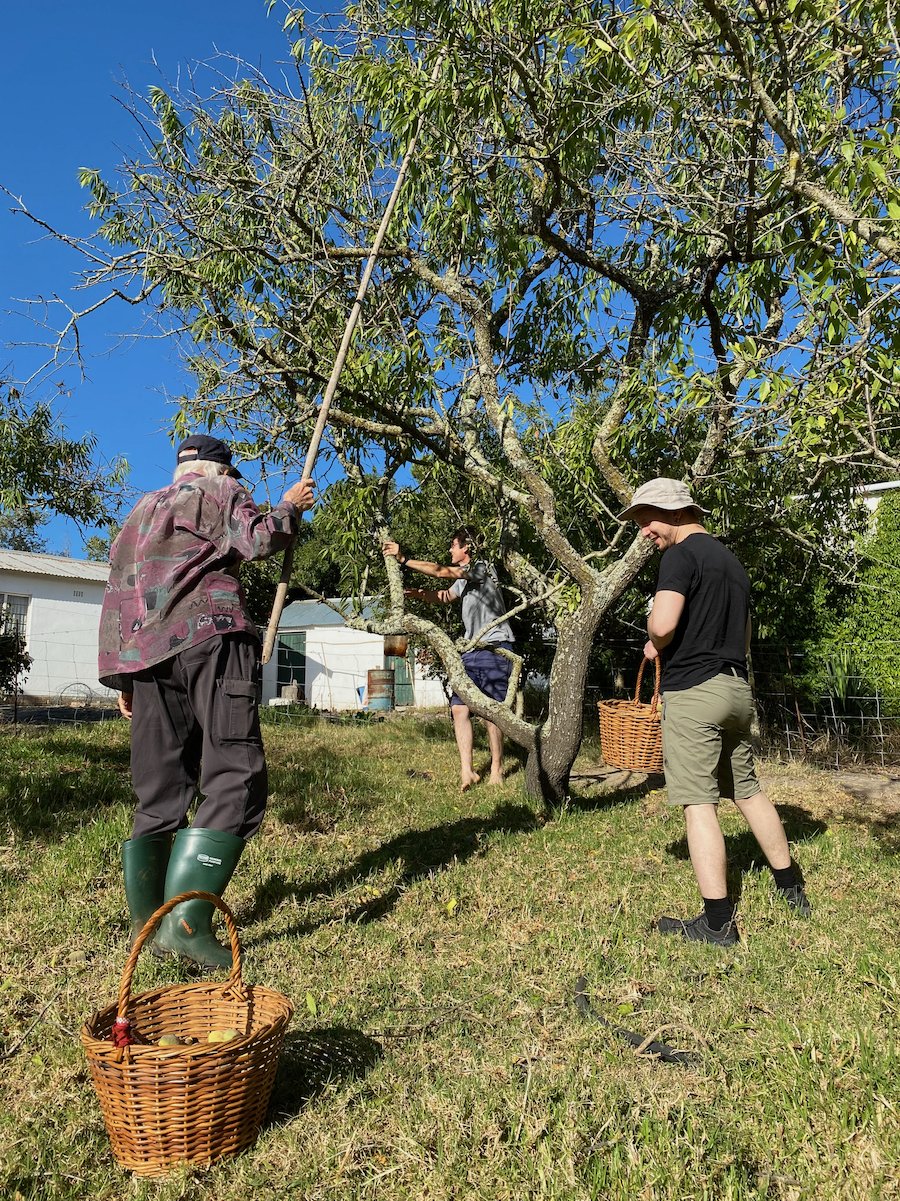

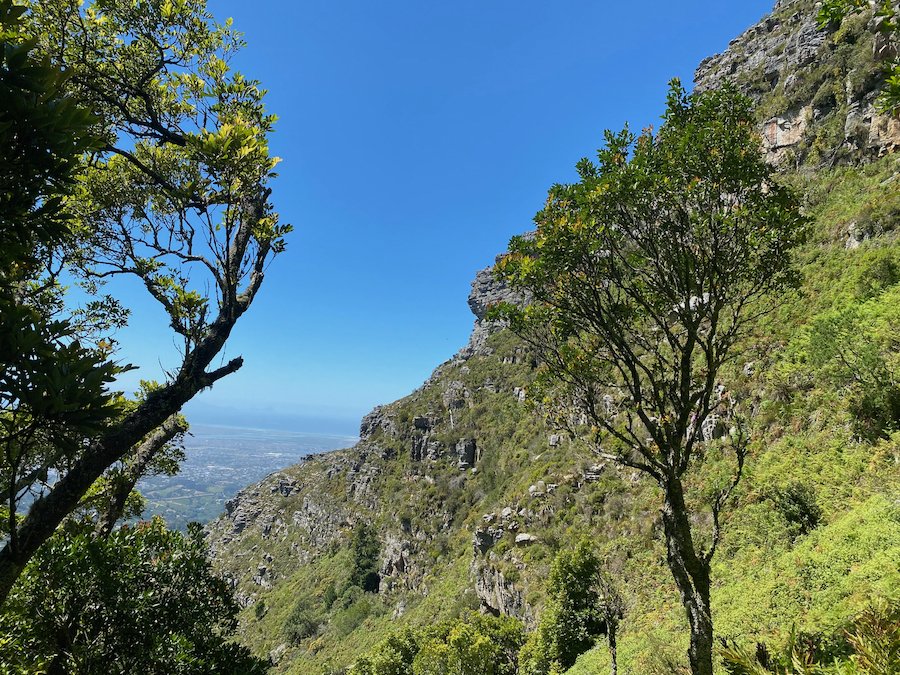
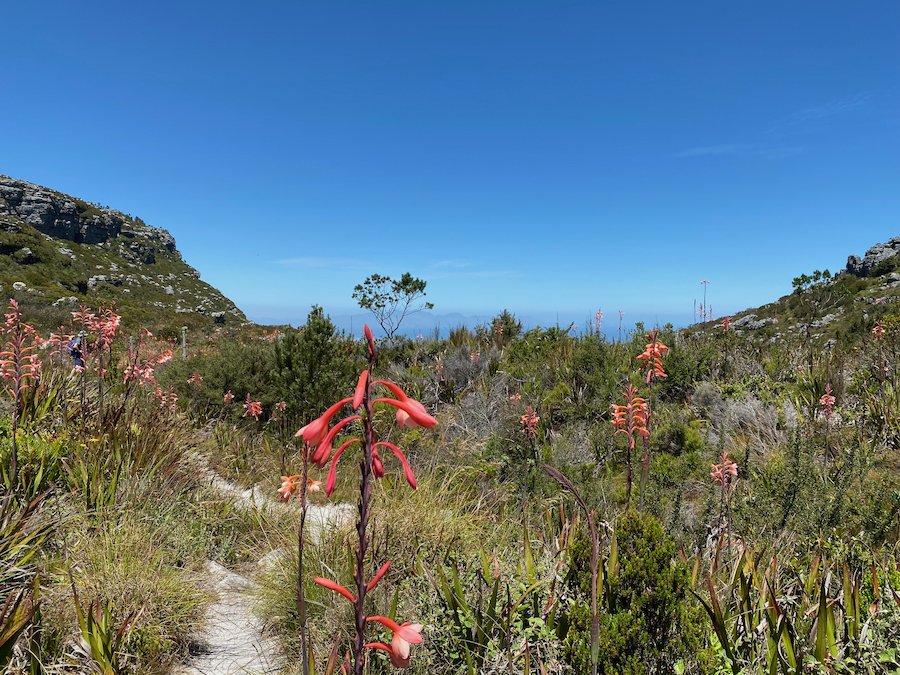
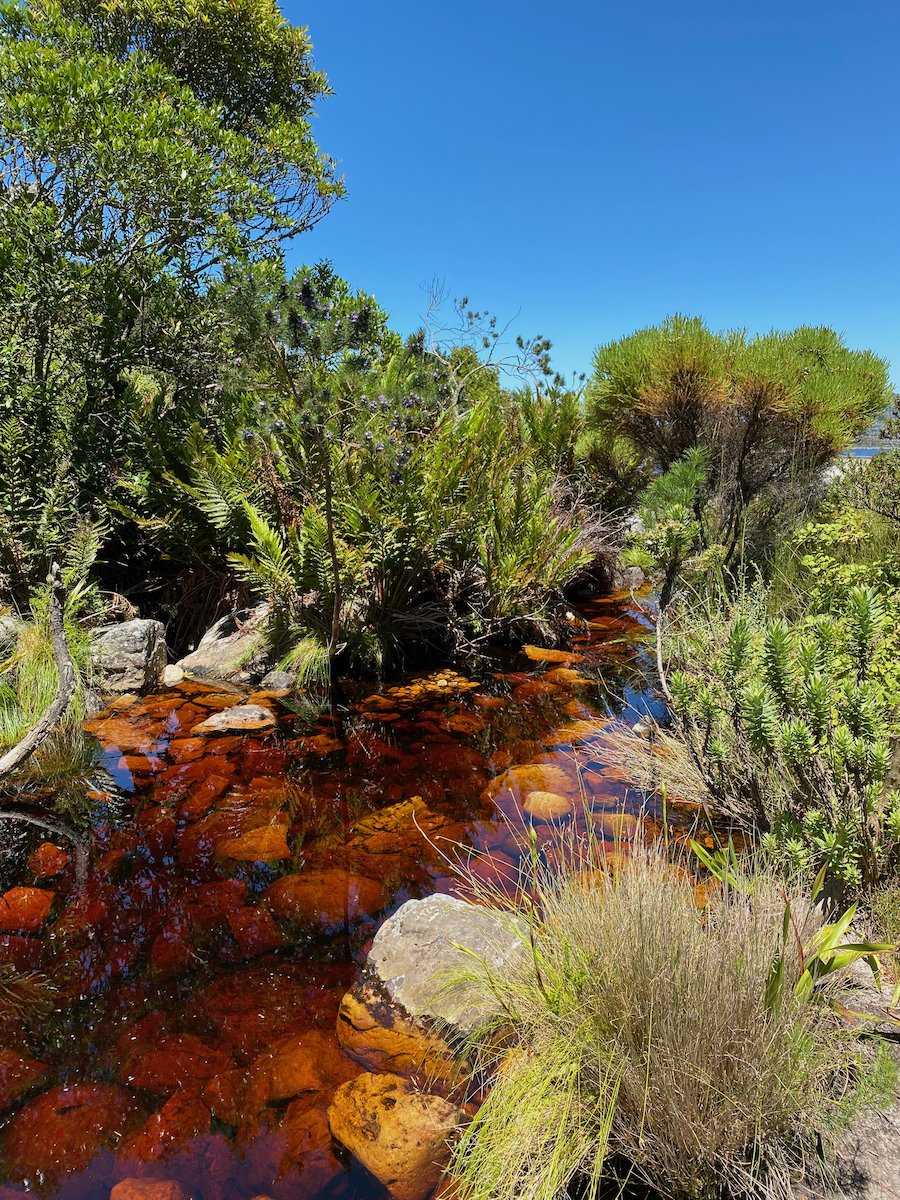

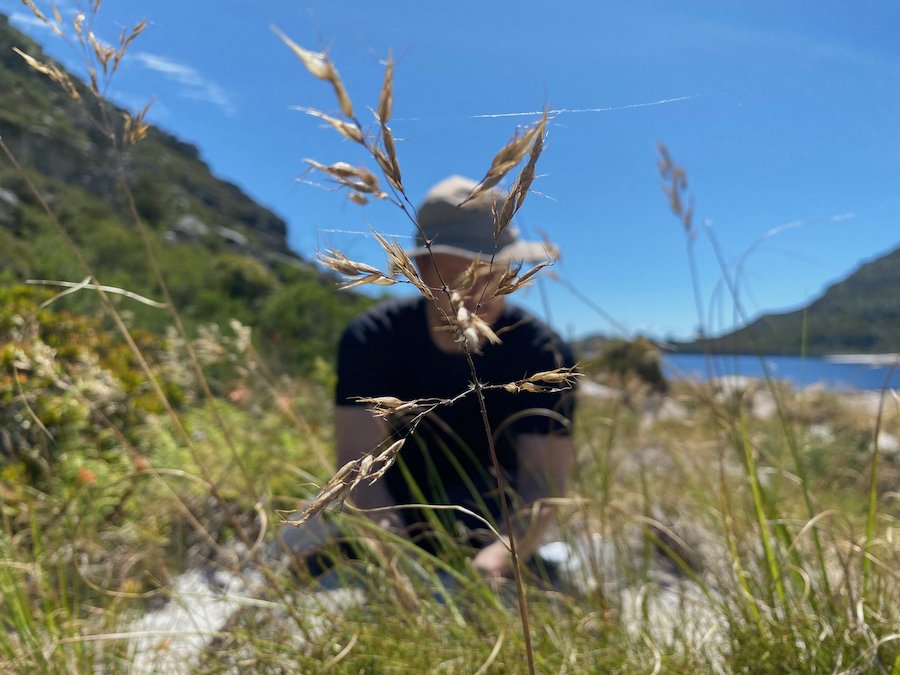






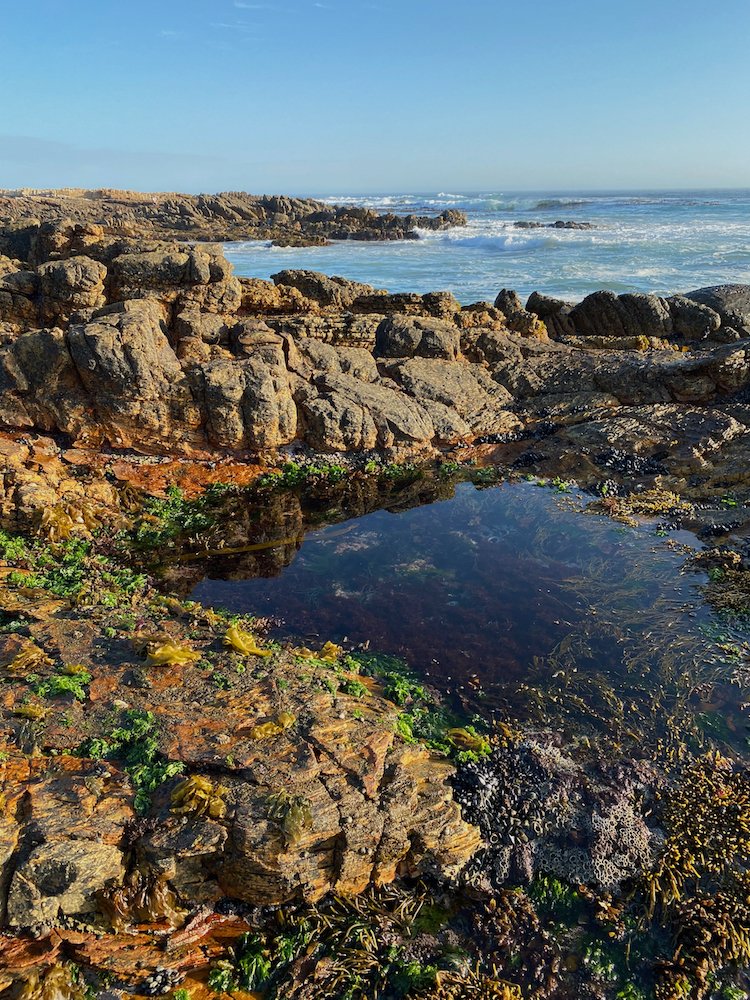

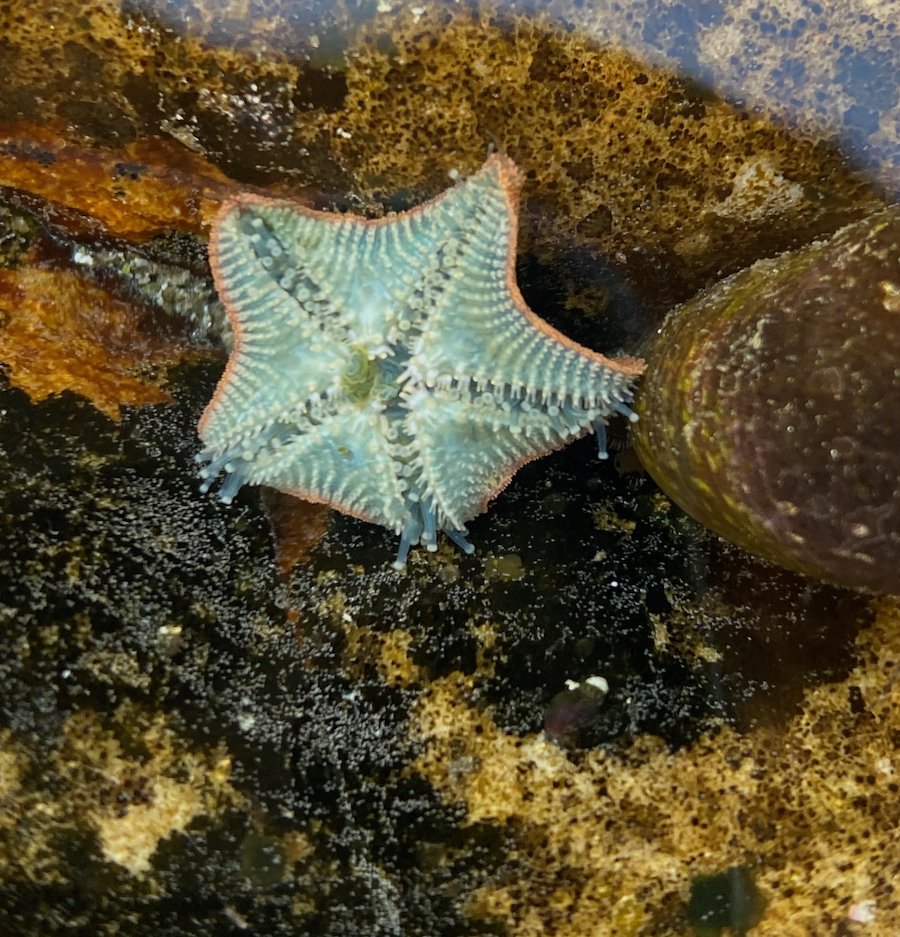

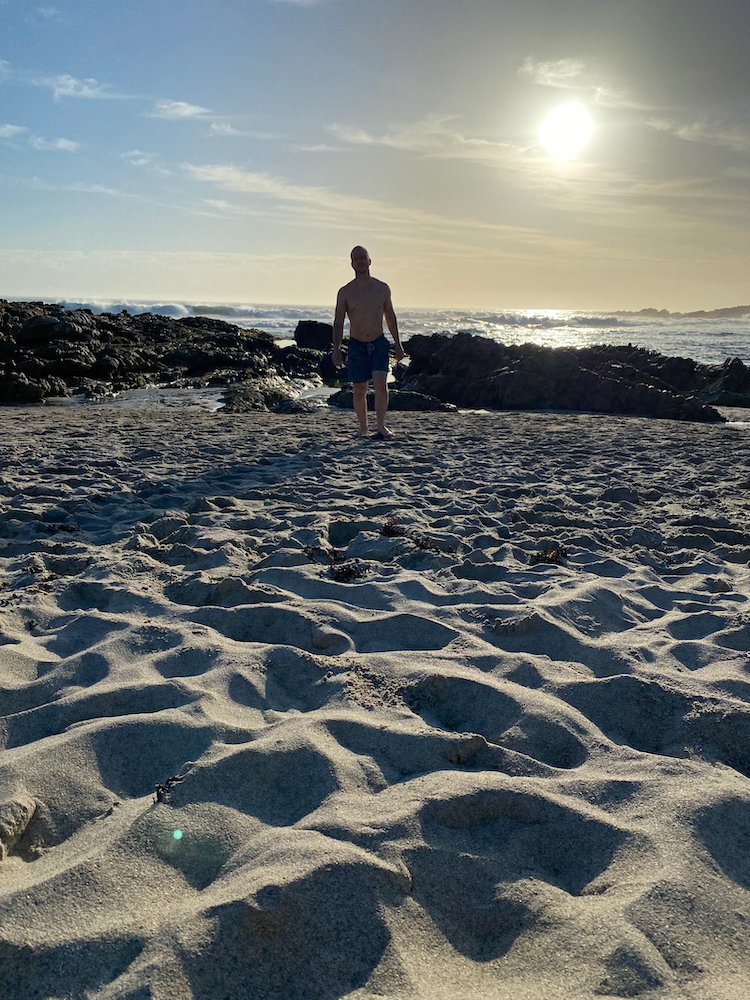









































It’s winter. I cherish this white and noiseless time between the bustle of our Christmas season and the start of the new year. Since moving to Europe, it’s taken me a few years to learn to fully appreciate winter. Now, I know it’s one of the reasons I wanted to move here in the first place: I needed a real winter, I needed its pause and reflection, its going-underground, its gathering-of-forces, its quiet stripping away of the unnecessairy, its gestation for new creativity to emerge.